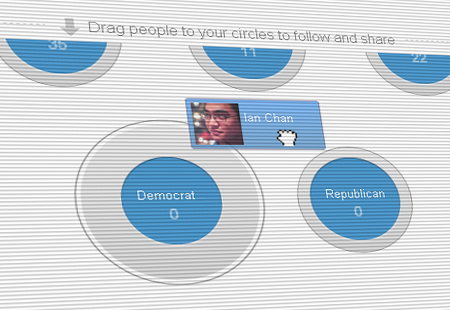Understanding your options, with your stock options
Who should read this?
I wrote this for anyone who finds themselves confused by the thought of trying to understand their stock options. Generally, this is for the Silicon Valley startup employee granted ISO’s (Incentive Stock Options)as part of their compensation package and who smiles and nods uncomfortably when someone asks them if they’ve got “stock”. Hello there.
Written by your average Software Engineer, in plain English, I’ll try to cover the very basics and terminology that I believe every startup employee should know. This will not cover tax preparation, specific tax scenarios, nor will it include any specific planning or investment advice. As a necessary disclaimer:
I am not a tax professional, I just find this stuff fascinating. This is merely a brain dump of my personal experience / research on the topic over the last 5-6 years. Take everything I say here with a huge block of Himalayan Salt. I highly encourage the reader to seek professional tax advice in addition to doing their own extensive research.
The Basic Strategy
Best case scenario: You were GRANTED stock options after joining a hot new tech startup, congrats! The grant itself is the long jargony paperwork you signed shortly after joining, which details everything you were offered. The OPTIONS are a compensation agreement, between you and your company, to the rights to purchase partial ownership of the company in the form of SHARES/STOCK. It’s worth understanding that you don’t own anything yet, an option (taken literally) is nothing more than the opportunity to own in the future. As time goes on, you will VEST your options, meaning more and more of your total grant will be available to act upon over time. Vesting, and vesting schedules, are generally an incentive for you to stay at a company for a long time. At some point, you may choose to EXERCISE your options, more specifically purchase some shares. The act of “exercising your options” means that you are agreeing to purchase a portion of the stock your company reserved for you. You hand over some money to your company and are now in possession of company stock. Congrats, you are a shareholder! Some time passes and you decide to SELL the shares you own. You find a buyer, they give you money, and the shares no longer belong to you. The general life cycle looks like this:
Grant ⇨ Vest ⇨ Exercise ⇨ Sell
What exactly do I have?
It is impossible to start talking about your options unless you know certain critical pieces of information. This is information that you should have probably known before joining a company, but if you don’t, that is OK. This information is available in your stock plan and from your company. This is information you should have seen when you signed your initial grant paperwork. If you haven’t seen/signed it, then you don’t have any options yet.
- Option Type*: ISO vs NSO vs RSU
- Vesting Start Date: Often the day you join
- Vesting Schedule: Commonly 4 year vest, 1 year minimum (aka “cliff”)
- Option Shares: How many options were you given?
- Strike Price: What is your exercise price per share?
- FMV: Fair market value, how much is the stock worth right now?
*Incentive Stock Options, Non-(statutory/qualified) Stock Options, Restricted Stock Units
You are entitled to, and should know all of the above bits of information. If you are missing even one of those bullets, something is wrong, go ask your employer to clarify. Go now, I’ll wait.
What are my options… with my options?
Many people don’t appreciate the value of having Incentive Stock Options. A lot of people join a company, find out they have stock options and say: “Great! … so what?” (Heck, I’ve been guilty of doing this twice!). ISO’s can only be granted to employees of the company and have some wonderful preferential tax treatment. You are given the access to a very scarce resource, namely the option for shares in a private company. Once given these options it is your responsibility to do something with them, and no one else’s. I’ve heard many people vent frustration that their employer/coworker/boss didn’t tell them more, but it is not their responsibility to do so – in fact an employer can face significant legal problems if they were to give you unsound tax advice, or even sound advice that just didn’t work out favorably for you. A smart employer will give you the minimum legal amount of information possible. It is up to you (hopefully with the aid of a tax person) to take appropriate actions with your options.
Generally speaking, the things you can do with your options include: do nothing, exercise, sell, forfeit
Do nothing
Many people do absolutely nothing with their stock options. Sometimes it’s because it’s part of their investment strategy, though usually this happens because people aren’t entirely sure what they can do. It is perfectly within your rights to do nothing at all. Your stock options will remain yours as long as you are employed at the company. Doing nothing (with ISOs) will not create a new tax liability, however it could significantly complicate your taxes and the flexibility with your options in the future. Specifically, acting too late could make it financially difficult to leave your company without giving up your options (due to the potentially large tax burden). On the other hand, doing nothing minimizes any personal financial risk in the more common case when a startup fails. Since, on average, most startups do not achieve financial success, doing nothing actually works out to be the most “profitable” choice.
Exercise
At some point you purchase some of your options. You can freely exercise any amount of stock that you’ve vested to date, even if your company is not public yet. You can actually exercise before vesting, but that’s a more advanced topic to be researched elsewhere. After exercising, you could leave your company and take your shares with you. You could hold onto these shares for as long as you want and do what you please with them (in accordance with your shareholder’s agreement). You could purchase some of your shares and happily stay with your company. I personally exercised, printed a copy of my stock certificate and put it on my wall, *shrug*. Holding onto your shares is an investment. By doing so you are hoping that the value increases so that you can sell at some future date and hopefully make a profit.
Exercising ISO’s will not create a regular income tax liability HOWEVER! *record scratch + KILL BILL siren* it may (and likely will) create an AMT liability. AMT: the alternative minimum tax. Learn that acronym, hate that acronym, love that acronym – please talk to your tax person about that acronym. If you aren’t familiar with AMT, familiarize yourself with it elsewhere. One of the most common and dangerous mistakes people make is exercising their ISO’s and assuming they don’t owe any taxes. Exercising options creates some personal financial risk on the employee, but opens the door to much favorable tax implications down the road if the startup is successful.
Sell
At some point you choose to sell some of your stock. Remember, you can only sell what you’ve previously exercised. Perhaps you don’t like the idea of long term investments. Perhaps you need/want some cash immediately. Some people do what is known as a “same day sale”, in which they exercise and immediately sell their stock to another buyer. Selling shares requires you to exercise some vested options (previously or as part of the transaction), then find a buyer willing to pay a hopefully favorable price to take them off your hands. Specific details of the liquidity of your stock prior to your company going public will be documented in your shareholder’s agreement.
If you are selling your exercised stock options, you will again have a potential tax liability. Depending on how long you’ve held your exercised options before the sale, any profit made from the sale will be taxed as either regular income (if held for less than a year) or as long term capital gains (if held for over a year, and 2 years after grant). This last point (in profitable situations) is where one employee could potentially save thousands on taxes compared to their coworker who didn’t plan for this event.
Forfeit
Surprisingly, this happens more often than not. If you leave a company before you are fully vested, you will be giving up those unvested options. Additionally, when you leave, you will be giving up any un-exercised options, recall that you don’t own stock until you actually exercise your options. Many people don’t even realize they’ll be forfeiting their options when they leave a company. Again, this is completely on the employee to realize, understand and act upon. In accordance with your stock option plan, you will probably have around 90 days from leaving your company to exercise options before they disappear. It isn’t uncommon to electively forfeit options because of the significant financial risk it could place on the employee. An ISO exercise requires the option holder to pay out of pocket for their options and also suffer a potentially large AMT tax liability.
Summary
Startup stock options can be a very lucrative and profitable bet if you fully understand what you are getting yourself into. If you were granted incentive stock options, the ball is now in your court to educate yourself further on what it all means, and how to act on your options. Once again, it is not the responsibility of your employer to tell you what to do. I do believe that every person who possesses stock options should fully understand what their choices are and have a surface level understanding of the tax implications behind each choice. I hope the reader is now comfortable enough with the basic terms/process so they can learn more, talk with their friends/coworkers/tax professionals confidently, as they make their own preparations on how they want to play the game.
Choose wisely, and good luck!
























